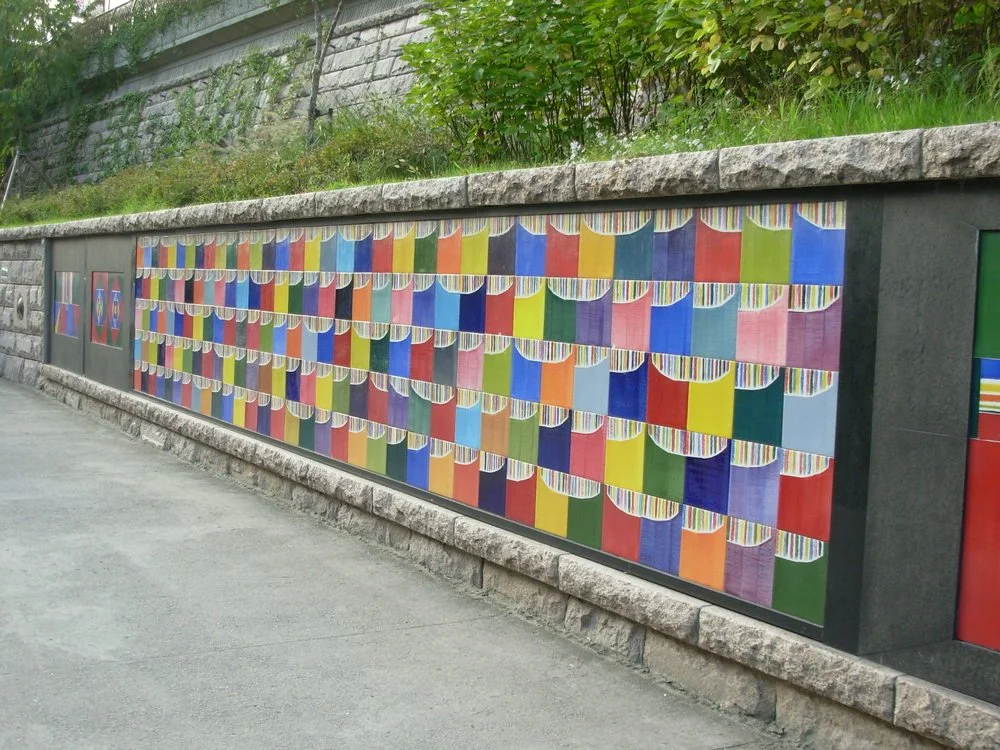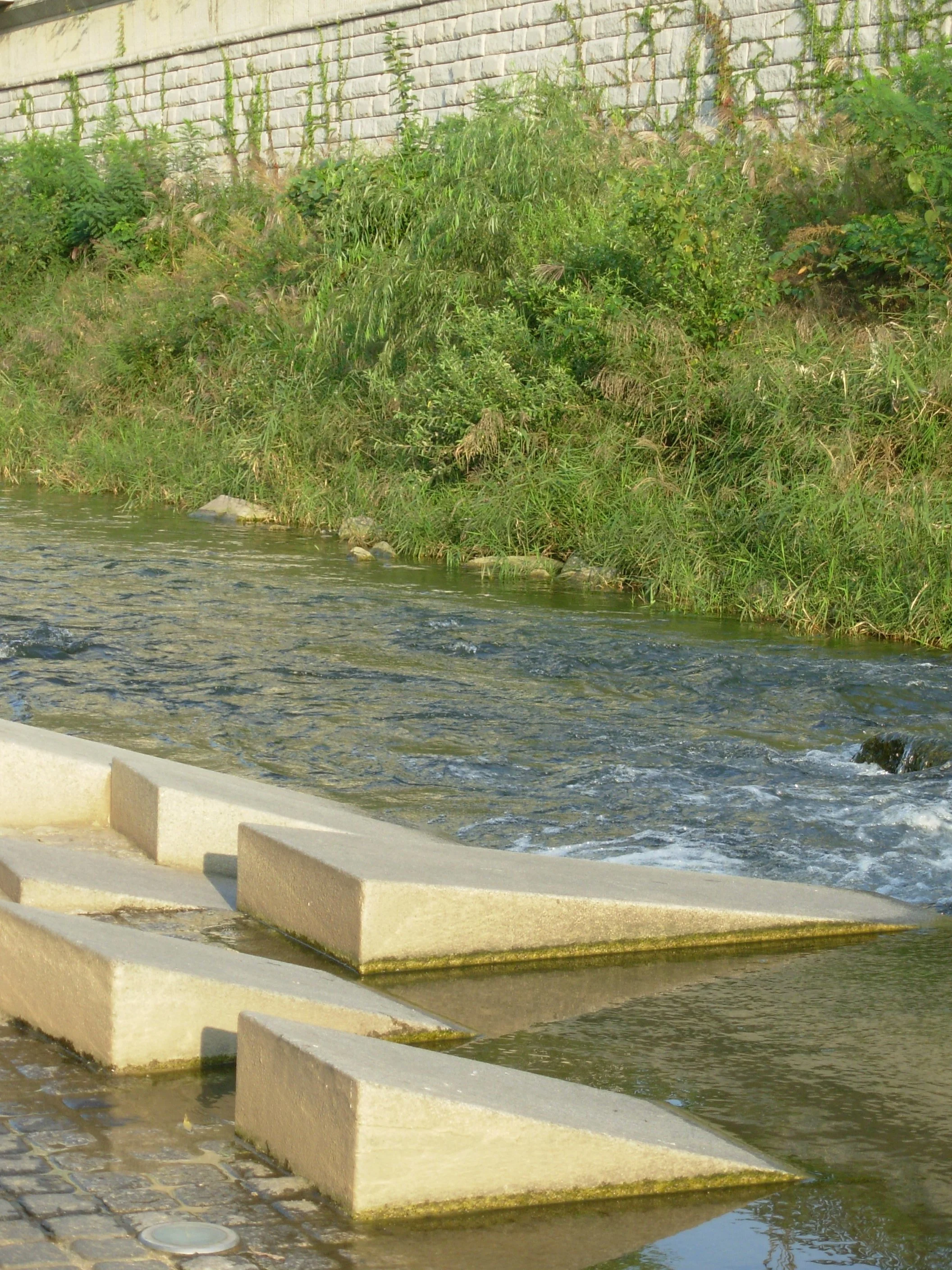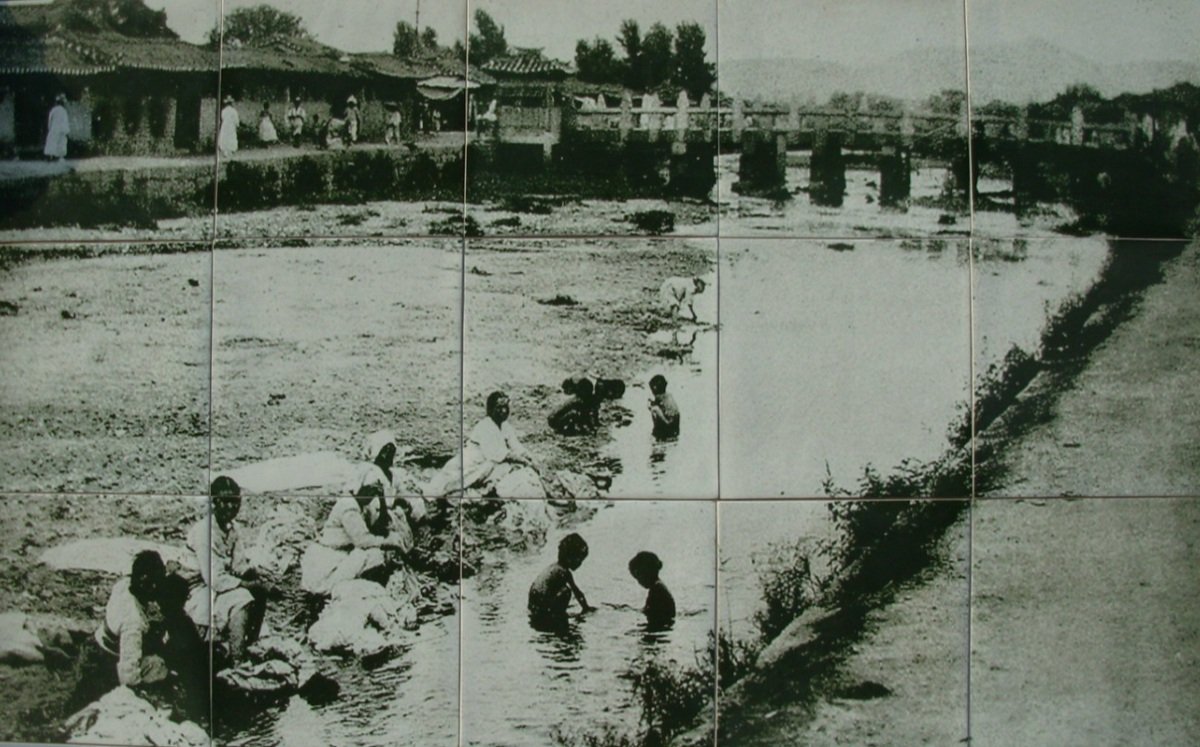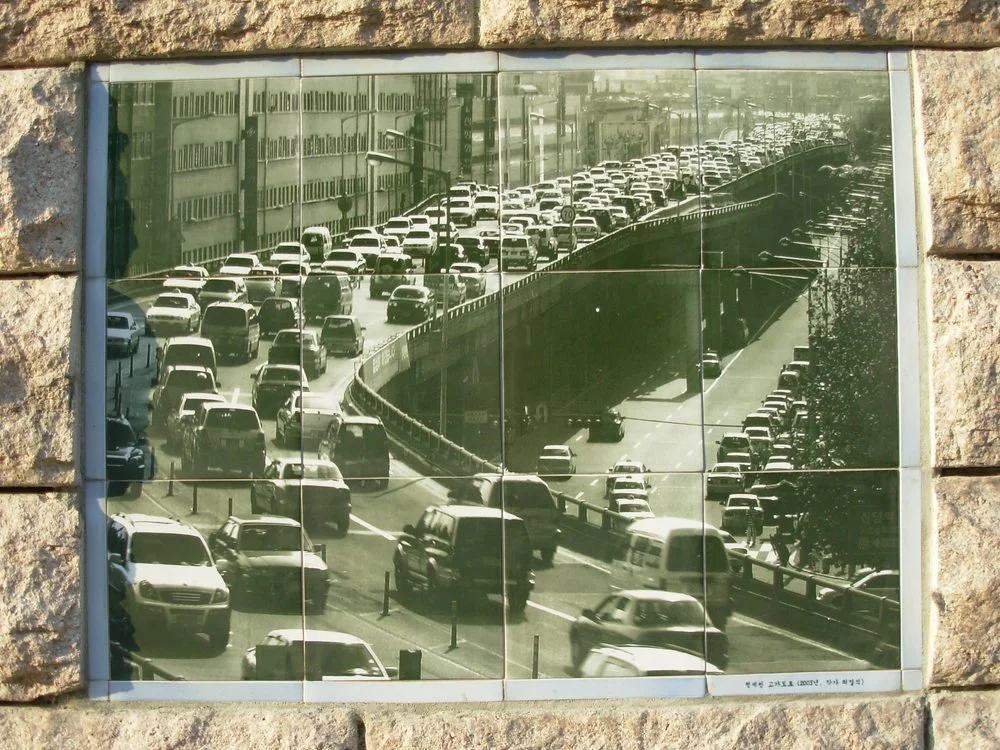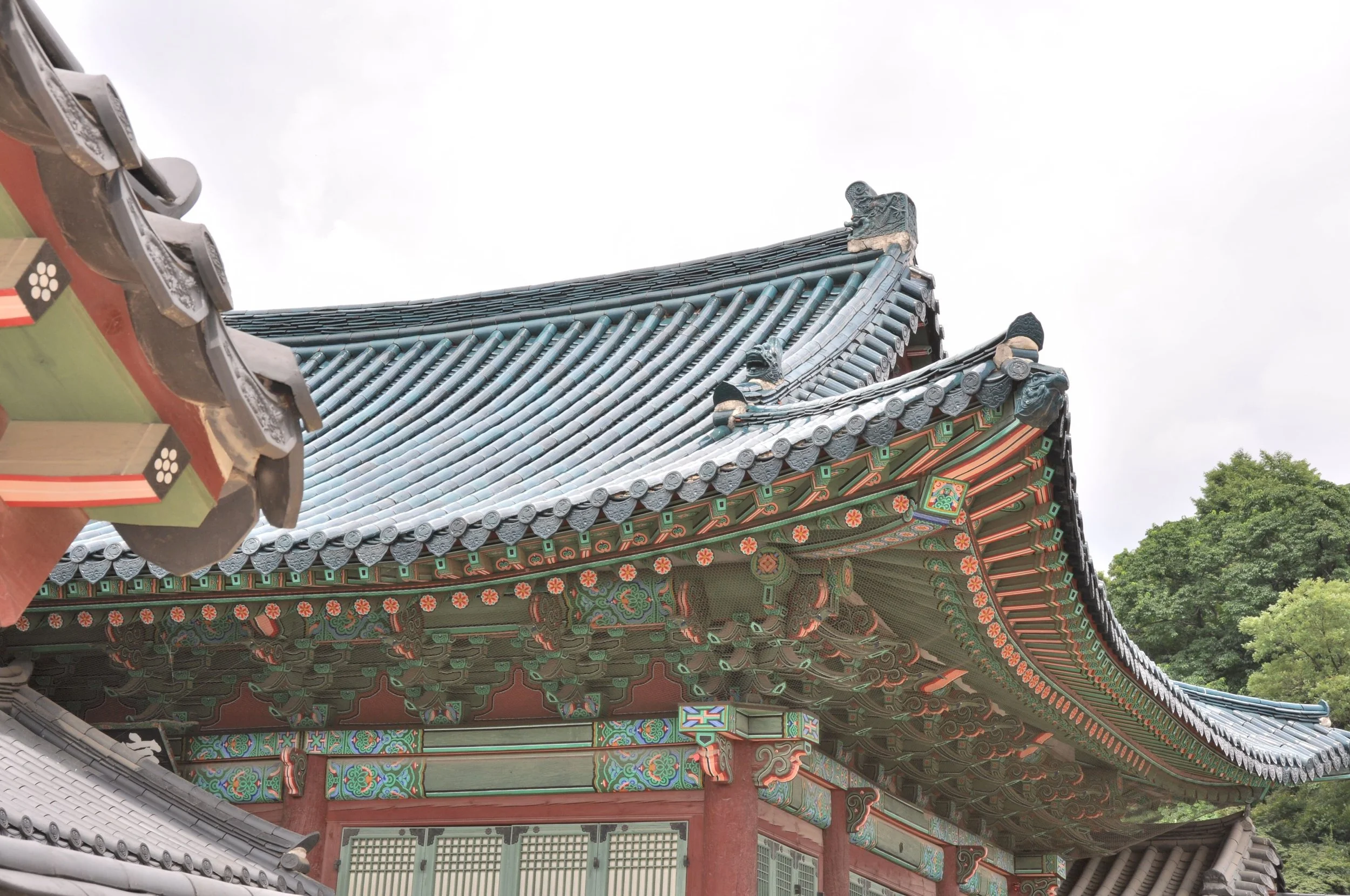One warm Saturday afternoon in October, I decided to take a walk down Cheonggyecheon, a stream that flows from west to east in Central Seoul. It soon became one of my favourite things to do in the city.
I started out at Cheonggye Plaza, where a wide waterfall and fountains designate the westernmost beginning of the stream.
One of my guidebooks calls Seoul “a city where nature, culture and history exist in harmony” and the Cheonggyecheon Stream is an authentic example of this idea. Various art pieces on the walls surrounding the stream are great focal points along the walk. Each piece—from the colourful, blanket-like Rainbow Wall (Wall of Saekdong) to the Wall of Hope with tiles created by North and South Koreans at home and abroad—is unique and interesting.
Rainbow wall at Cheongyecheon,Seoul
There is also a Historic Laundry Site, with triangular concrete slabs, dedicated to the women who once washed laundry in the stream.
One of my favourite pieces is at the easternmost end of the stream: the Jonchi Piers. It is such a contrast to the previous beautified, naturalised stream. These three crumbling piers that once supported an overpass jut out of the water; I was impressed by their imposing character.
My guidebook writes that these piers were left standing as a reminder of the stream’s previous life and as a reminder of the importance of the stream’s restoration. In the 1960s and 1970s, the stream was covered due to commercialization and sanitary needs of the area. Raised highways were built over the covered stream. Years later, more problems occurred once road traffic polluted the stream and damaged infrastructure.
Cheonggyecheon before its restoration
A plaque at the beginning of the stream states that Cheonggyecheon was restored with the “objective of forming a human-centered, ecological-friendly urban area”. The piers, the stairs and rocks available to lounge on, the many bridges, the artwork along the stream, as well as the tall buildings that surround the area keep the human side of nature alive.
The stream’s modern appearance never allows it to pretend it is all-natural—and that is one of its most endearing qualities. Like the plaque says, it’s an urban area. It was built by humans for humans. But, to me, listening to the sounds of traffic driving by the stream was just as relaxing as watching the birds flying by and listening to the tall grasses shuffling in the wind.
Header image by Francisco Anzola @ Flickr

